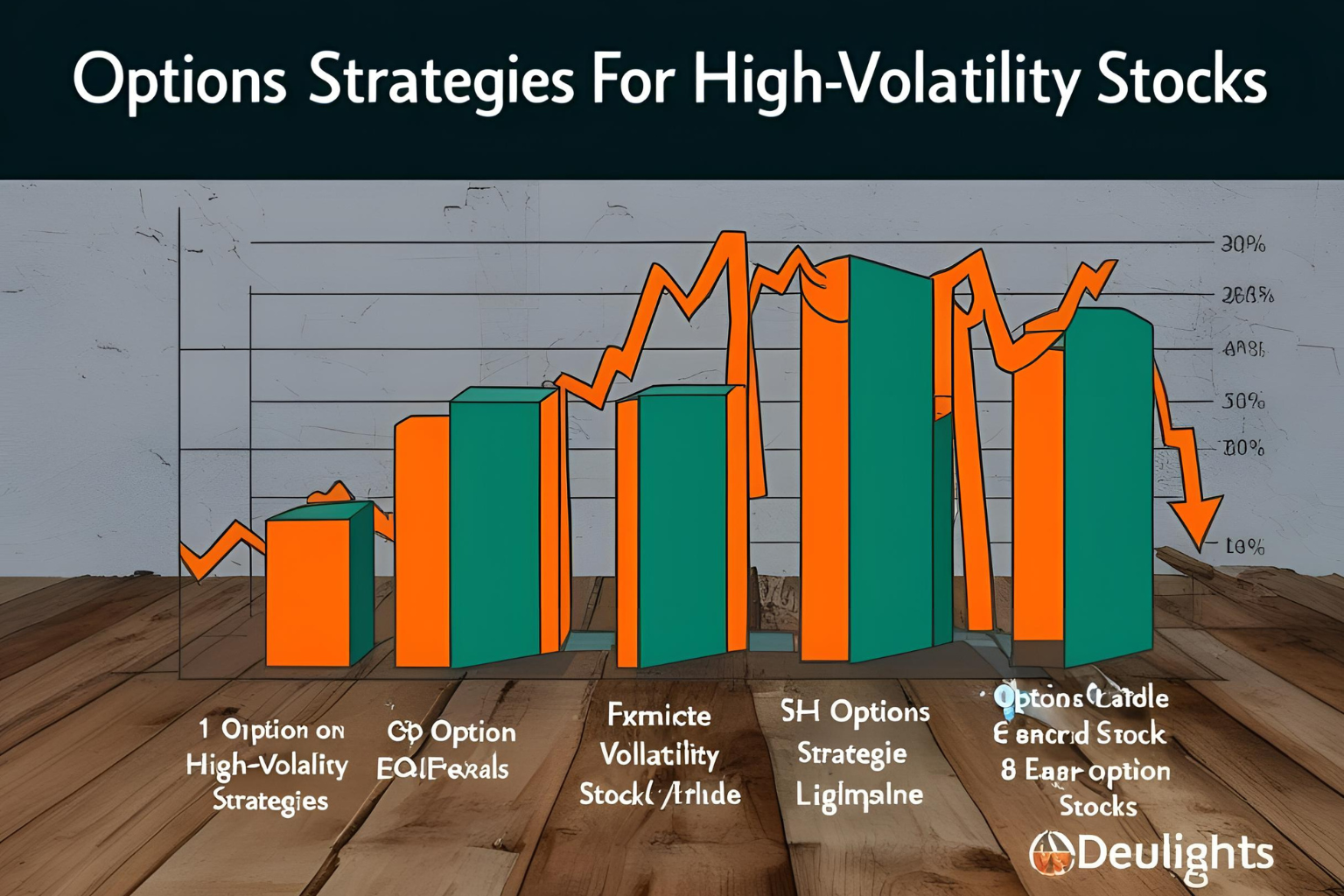Options Strategies for High-Volatility Stocks
When trading high-volatility stocks, options can be powerful tools for managing risk, maximizing reward, and taking advantage of large price swings. But volatile stocks come with both opportunity and danger—making it essential to use the right options strategies for each scenario.
In this guide, we’ll cover the best options strategies for high-volatility stocks, whether you’re aiming to profit from big moves or hedge risk in unpredictable markets.
Why Use Options with Volatile Stocks?
Volatile stocks are known for:
- Wide price ranges
- Sharp intraday or multiday swings
- Unpredictable reactions to news or earnings
Options allow you to:
- Limit risk with defined-loss strategies
- Generate income from inflated premiums
- Profit whether the stock moves up, down, or sideways (with the right setup)
1. Straddle Strategy
When to use:
Before earnings or major news when you expect a large move, but not sure which direction.
Setup:
- Buy 1 call and 1 put at the same strike price and expiration
- Example: Buy 1 $50 call and 1 $50 put
Goal:
Profit from a move in either direction that exceeds the combined cost (premium) of the options.
Risk:
Premium paid for both options
Best for: Traders expecting explosive movement, especially around catalysts.
2. Iron Condor
When to use:
When implied volatility is high, but you expect the stock to stay within a range.
Setup:
- Sell an out-of-the-money call and put
- Buy further out-of-the-money call and put as protection
Goal:
Collect premium as the stock trades sideways and both short options expire worthless.
Risk:
Limited to the width between strikes minus the premium collected
Best for: Traders who want to capitalize on time decay and IV contraction.
3. Vertical Spread (Bull or Bear)
When to use:
When you’re directional, but want to reduce cost and risk.
Setup (Bull Call Spread):
- Buy a call at lower strike
- Sell a call at higher strike (same expiration)
Setup (Bear Put Spread):
- Buy a put at higher strike
- Sell a put at lower strike
Goal:
Capture price movement while lowering premium cost compared to buying a naked call or put.
Risk:
Limited to net premium paid
Best for: Directional trades in volatile stocks with defined risk.
4. Covered Call on Volatile Stocks
When to use:
You own the stock and want to generate income during sideways or slightly bullish phases.
Setup:
- Hold 100 shares of stock
- Sell a call option at a strike above current price
Goal:
Earn premium while capping upside potential
Risk:
Stock drops significantly; covered by long position, but not protected from full downside
Best for: Long-term holders of volatile names seeking premium income.
5. Protective Put
When to use:
You’re holding a volatile stock and want downside insurance
Setup:
- Own the stock
- Buy a put option below current price
Goal:
Limit downside while staying exposed to upside
Risk:
Cost of the put (premium)
Best for: Traders who want to hedge against sudden drops in volatile holdings.
Tips for Trading Options on Volatile Stocks
- Always check implied volatility (IV Rank/Percentile) before entering
- Use defined-risk strategies—avoid naked positions in wild stocks
- Adjust position size to reflect potential gap risk
- Watch for IV crush after earnings—strategies like straddles become less effective post-event
- Consider short-duration trades for quicker setups in fast-moving markets
FAQs
Which strategy is best for earnings plays?
Straddles or strangles can capture large earnings moves. Just be cautious of IV crush post-announcement.
Is it better to buy or sell options on volatile stocks?
If IV is high, selling options can offer premium edge. If IV is low and you expect a move, buying may offer better risk-reward.
Can I use these strategies on penny stocks?
Most penny stocks don’t have liquid options chains. Stick to volatile names with strong volume and open interest.
How do I reduce risk when trading options on volatile stocks?
Use spreads, hedges, or risk-defined strategies like iron condors or debit spreads.
What’s a good IV percentile to look for?
Look for IV Rank or Percentile over 70% if you’re planning to sell premium. Under 30% if buying options for cheap exposure.




